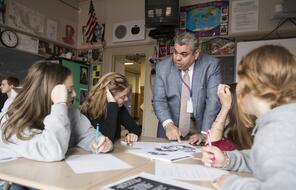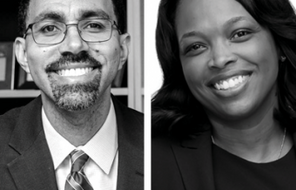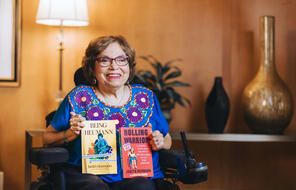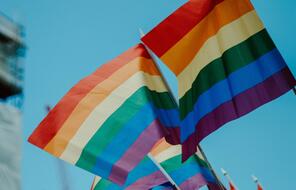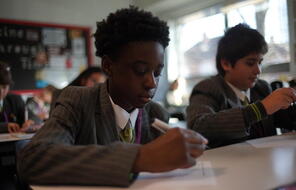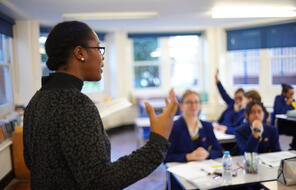LGBTQIA+ Pride Month can be at once festive and serious. While we highlight wonderful stories and heroes, the struggles and harm that continue to threaten the LGBTQIA+ community cannot be understated.
For over half a century, one of the hallmarks of Pride celebrations have been parades. The first Pride parades were held June 28, 1970 in New York City, Chicago, and Los Angeles exactly one year after the Stonewall Uprising.
Of that first organized walk through Greenwich Village in 1970, participant Foster Gunnison Jr. said, “And each of these 5,000 homosexuals had a new feeling of pride and self-confidence, for that was one of the main purposes of the event—to commemorate, to demonstrate, but also to raise the consciences of participating homosexuals—to develop courage, and feelings of dignity and self-worth."
Gay liberation now felt possible. For Gunnison and many others, this inaugural parade was a triumph following years of social oppression.
Pride parades are now held annually across the country and the world demonstrating harmony, joy, and solidarity under the iconic rainbow colors.
Throughout the year, across the world there are educational seminars, film festivals, family fairs, and everything in between to celebrate Pride. And yes, of course, there are Pride parades galore—parades, by the way, often known for show-stopping drag.
As Facing History honors Pride Month in June, we lift up the welcoming philosophy behind Pride as all sexual orientations and all gender identities are recognized and valued. From extraordinary contributions of LGBTQIA+ upstanders throughout history to tools to help affirm trans identities in the classroom, Facing History offers resources that will inspire and inform you and the young people in your life.
Professional Learning: Bringing LGBTQIA+ Upstanders into Your Classroom: A Conversation with Eric Marcus
Eric Marcus discusses what happens when we integrate the missing voices of the LGBTQIA+ community into our classrooms and curriculum.
Professional Learning: Brother Outsider
Learn how to use the documentary Brother Outsider to explore Bayard Rustin’s identity as a gay man of color trying to affect change in the 20th century and his legacy today.
Insight: How to Build an Affirming Classroom in the Face of Anti-Trans Legislation
Discover resources from Facing History to help educators build an affirming, welcoming class community for students, especially trans and non-binary students.
Lesson: Identity and Labels
Students analyze a cartoon and a short video that prompt reflection on the ways we use labels, stereotypes, and assumptions to identify each other.
Lesson: LGBTQIA+ History and Why It Matters
Students learn about two millennia of LGBTQIA+ history and reflect on how that history is represented in their textbooks and curricula.
Current Event: How Anti-LGBTQIA+ Legislation is Affecting Students and Teachers in 2023
Legislation targeting queer youth is at an all-time high. Learn more about this troubling trend and get tools to help you foster inclusion and support for all students.
Art Essay: “The First Pride Marches, in Photos”
Smithsonian Magazine highlights touching and powerful moments caught on camera of the first generation of Pride parades.
Article: “Black Queer Activists of Yesterday, Today, and Tomorrow”
Black voices, even more so Black queer voices, are not given much space to tell their stories, yet their bravery and resilience are lessons we are all richer for learning.


